
How to Use INA226: Examples, Pinouts, and Specs
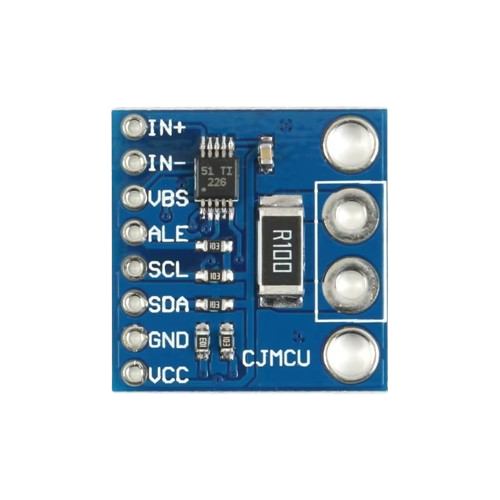
 Design with INA226 in Cirkit Designer
Design with INA226 in Cirkit DesignerIntroduction
The INA226 is a high-precision current shunt and power monitor with an I2C or SMBUS-compatible interface. It is designed to measure current, voltage, and power with high accuracy, making it an essential component for power management applications. The INA226 is widely used in various applications, including:
- Battery management systems
- Power supply monitoring
- Server and telecom equipment
- Industrial automation
- Energy metering
Explore Projects Built with INA226
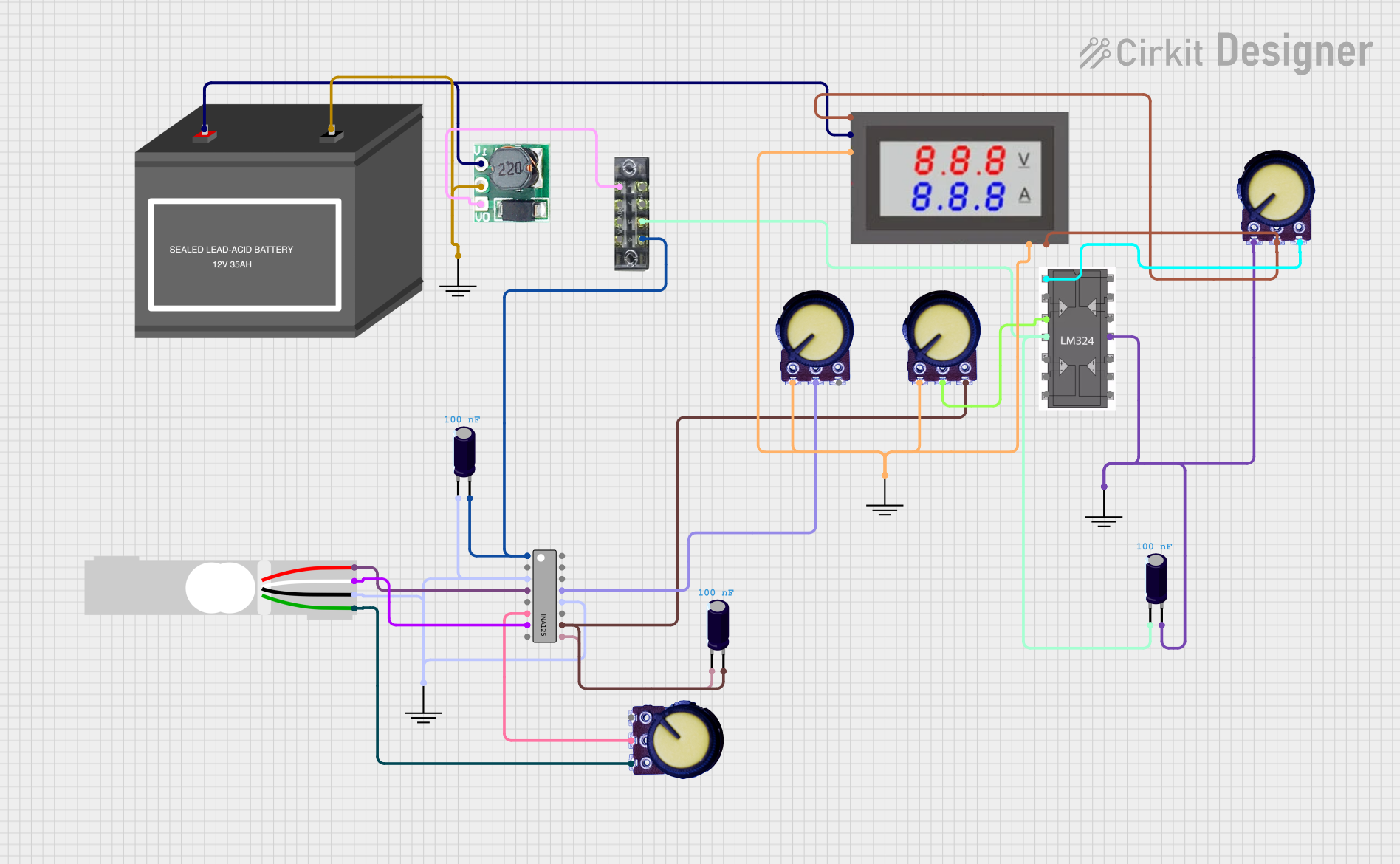
 Open Project in Cirkit Designer
Open Project in Cirkit Designer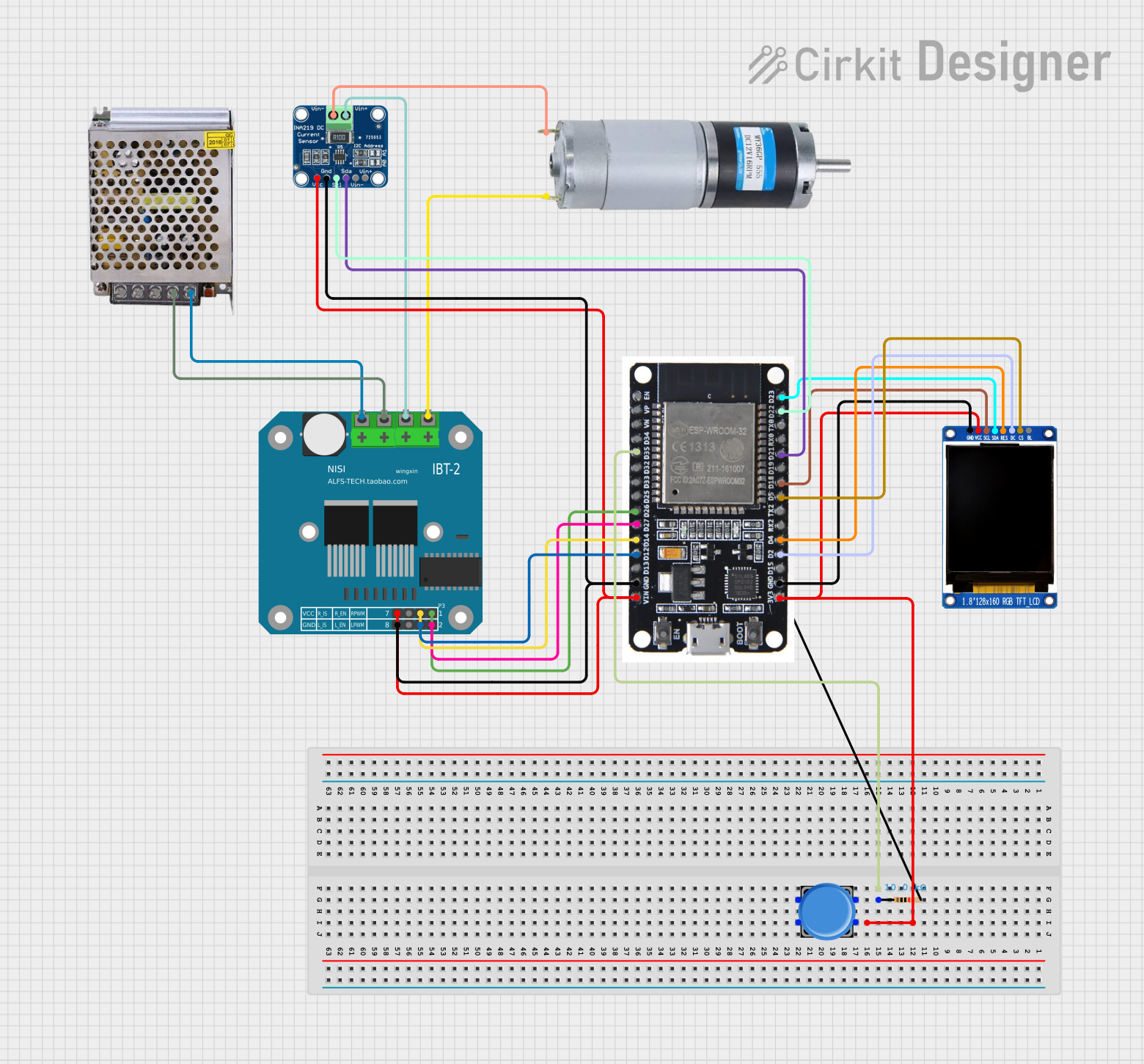
 Open Project in Cirkit Designer
Open Project in Cirkit Designer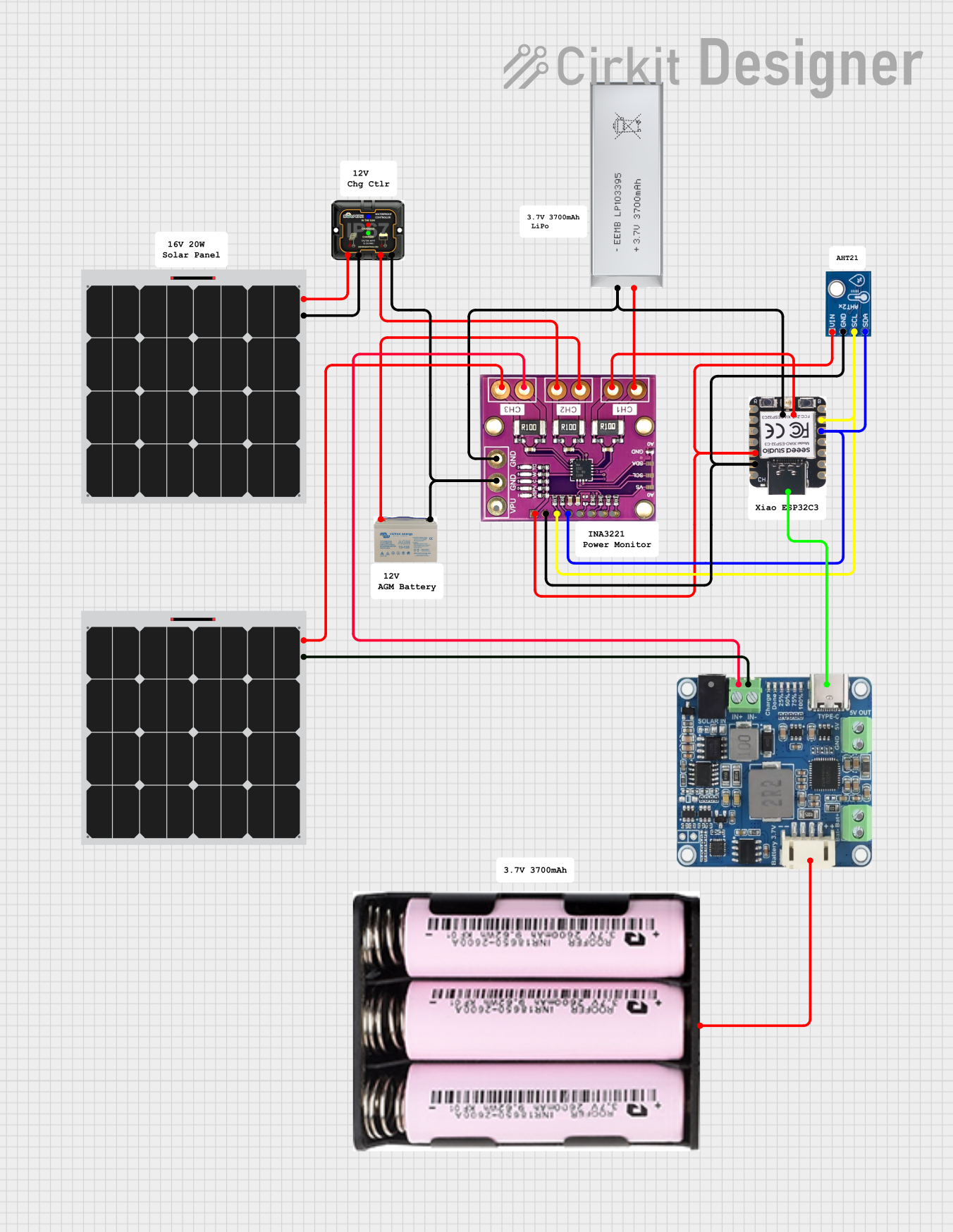
 Open Project in Cirkit Designer
Open Project in Cirkit Designer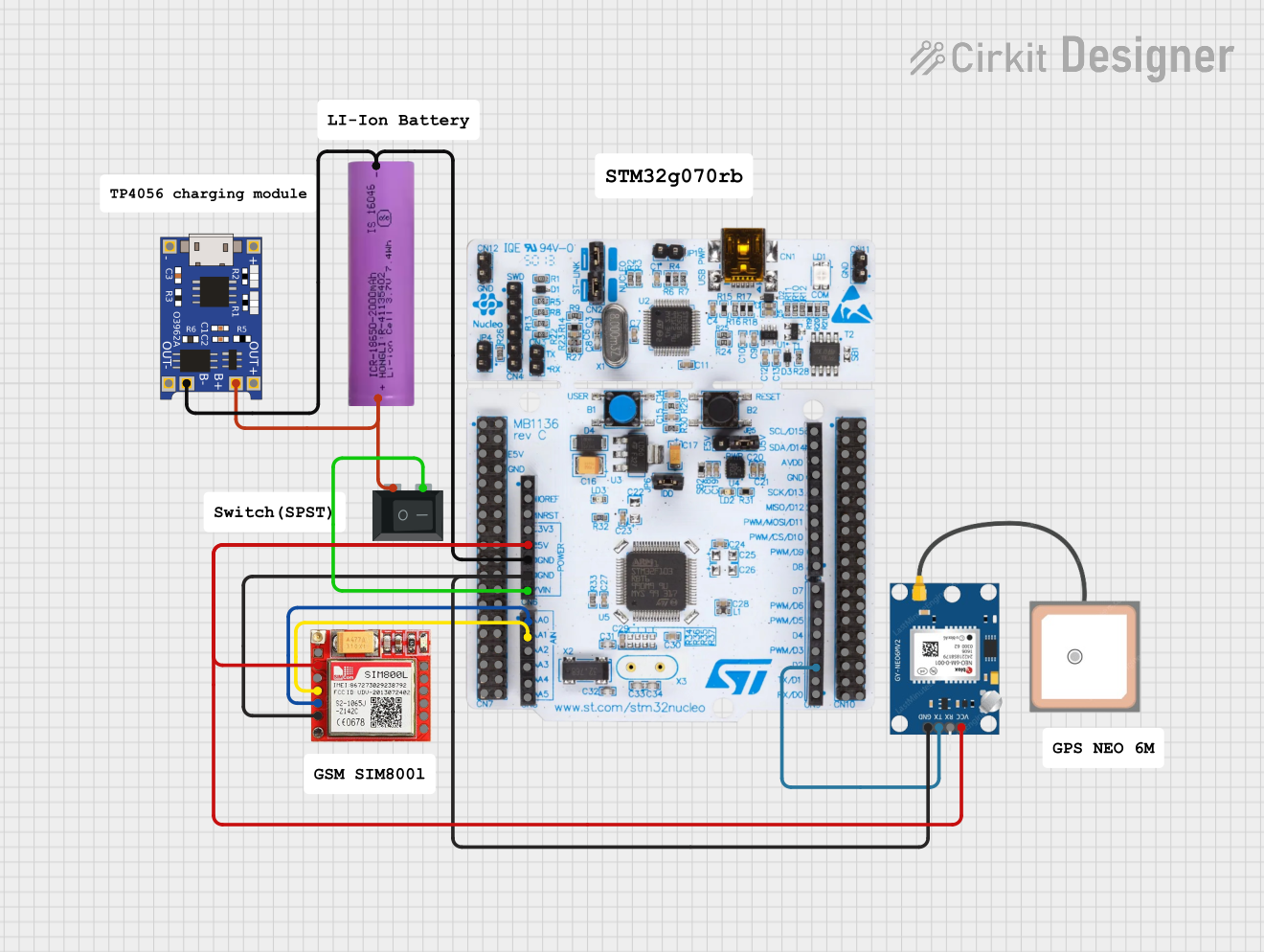
 Open Project in Cirkit Designer
Open Project in Cirkit DesignerExplore Projects Built with INA226

 Open Project in Cirkit Designer
Open Project in Cirkit Designer
 Open Project in Cirkit Designer
Open Project in Cirkit Designer
 Open Project in Cirkit Designer
Open Project in Cirkit Designer
 Open Project in Cirkit Designer
Open Project in Cirkit DesignerTechnical Specifications
Key Technical Details
| Parameter | Value |
|---|---|
| Supply Voltage (Vcc) | 2.7V to 5.5V |
| Operating Temperature | -40°C to +125°C |
| Bus Voltage Range | 0V to 36V |
| Shunt Voltage Range | ±81.92mV |
| Current Measurement Range | Configurable based on shunt resistor value |
| Communication Interface | I2C, SMBUS |
| I2C Address | Configurable (0x40 to 0x4F) |
Pin Configuration and Descriptions
| Pin No. | Pin Name | Description |
|---|---|---|
| 1 | VBUS | Bus voltage input |
| 2 | GND | Ground |
| 3 | SCL | I2C clock input |
| 4 | SDA | I2C data input/output |
| 5 | ALERT | Alert output (open-drain) |
| 6 | VSHUNT+ | Positive input for shunt voltage measurement |
| 7 | VSHUNT- | Negative input for shunt voltage measurement |
| 8 | VCC | Power supply input |
Usage Instructions
How to Use the INA226 in a Circuit
- Power Supply: Connect the VCC pin to a 2.7V to 5.5V power supply and the GND pin to the ground.
- Shunt Resistor: Connect a shunt resistor between the VSHUNT+ and VSHUNT- pins. The value of the shunt resistor determines the current measurement range.
- Bus Voltage: Connect the VBUS pin to the voltage bus you want to monitor.
- I2C Interface: Connect the SCL and SDA pins to the corresponding I2C pins on your microcontroller (e.g., Arduino UNO).
- Alert Pin: Optionally, connect the ALERT pin to an interrupt-capable pin on your microcontroller for alert notifications.
Important Considerations and Best Practices
- Shunt Resistor Selection: Choose a shunt resistor with a low temperature coefficient to ensure accurate measurements.
- PCB Layout: Place the shunt resistor close to the INA226 to minimize noise and ensure accurate measurements.
- I2C Pull-up Resistors: Use appropriate pull-up resistors (typically 4.7kΩ) on the SCL and SDA lines.
- Calibration: Calibrate the INA226 for your specific application to achieve the best accuracy.
Example Circuit Diagram

Arduino UNO Example Code
#include <Wire.h>
#define INA226_ADDRESS 0x40 // Default I2C address for INA226
void setup() {
Serial.begin(9600);
Wire.begin();
// Configure INA226
Wire.beginTransmission(INA226_ADDRESS);
Wire.write(0x00); // Point to configuration register
Wire.write(0x45); // Configuration MSB
Wire.write(0x27); // Configuration LSB
Wire.endTransmission();
}
void loop() {
// Read bus voltage
Wire.beginTransmission(INA226_ADDRESS);
Wire.write(0x02); // Point to bus voltage register
Wire.endTransmission();
Wire.requestFrom(INA226_ADDRESS, 2);
int busVoltage = (Wire.read() << 8) | Wire.read();
// Convert bus voltage to volts
float voltage = busVoltage * 1.25 / 1000;
Serial.print("Bus Voltage: ");
Serial.print(voltage);
Serial.println(" V");
delay(1000);
}
Troubleshooting and FAQs
Common Issues
No Communication with INA226:
- Solution: Check the I2C connections and ensure the correct I2C address is used. Verify that pull-up resistors are present on the SCL and SDA lines.
Incorrect Voltage or Current Readings:
- Solution: Ensure the shunt resistor is correctly placed and has the appropriate value. Verify the calibration settings and check for any noise in the circuit.
Alert Pin Not Functioning:
- Solution: Ensure the ALERT pin is connected to an interrupt-capable pin on the microcontroller. Verify the alert configuration settings in the INA226.
FAQs
Q1: What is the maximum current the INA226 can measure?
- A1: The maximum current is determined by the value of the shunt resistor and the maximum shunt voltage (±81.92mV). For example, with a 0.01Ω shunt resistor, the maximum current is ±8.192A.
Q2: Can the INA226 measure negative currents?
- A2: Yes, the INA226 can measure both positive and negative currents, depending on the direction of current flow through the shunt resistor.
Q3: How do I change the I2C address of the INA226?
- A3: The I2C address of the INA226 is configurable through the A0 and A1 pins. Refer to the datasheet for the specific address configuration.
Q4: What is the resolution of the voltage and current measurements?
- A4: The INA226 provides a resolution of 1.25mV for bus voltage measurements and 2.5µV for shunt voltage measurements.
By following this documentation, users can effectively integrate the INA226 into their projects and achieve accurate power monitoring. For further details, refer to the INA226 datasheet and application notes.